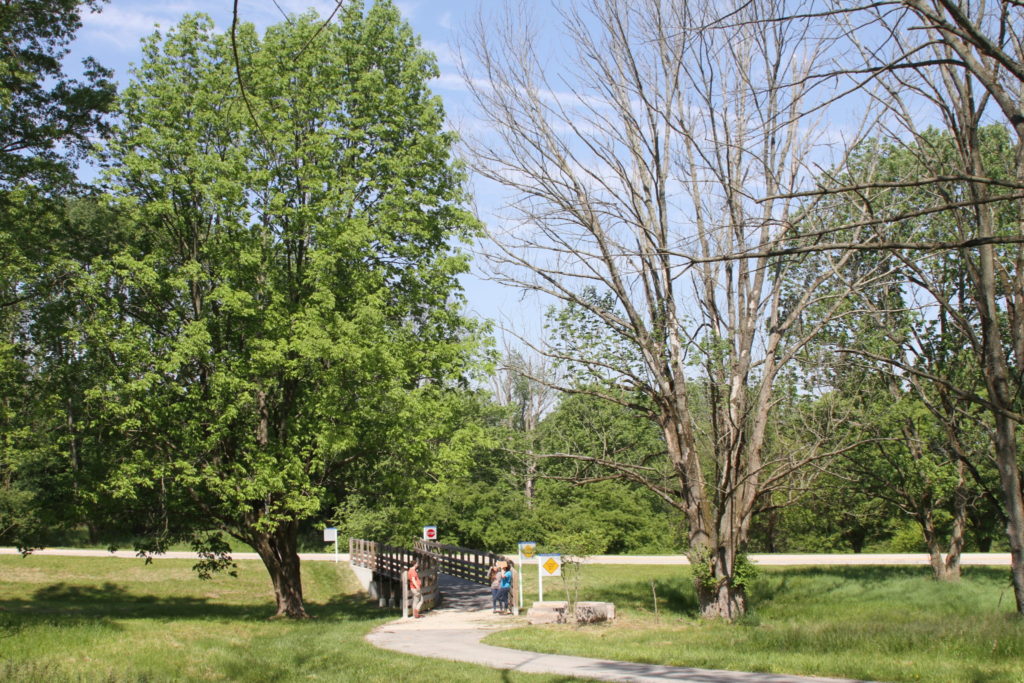When emerald ash borer swept through the Midwest it left three kinds of ash trees in its wake: the dead, the dying, and the diligently protected and thriving. The hunt was on for ways to stop this insect and save North America’s ash trees. Now, nearly 20 years later, not only do we have tools to fight this insect but we are developing better management techniques every day.
Treating ash trees with emamectin benzoate has long been shown to be effective against emerald ash borer but new data shows that a single injection can last 3 growing seasons. Emamectin benzoate is injected into the trunk of a tree and travels throughout the live parts of leaves and stems. Insects that feed on this tissue are killed when they ingest the emamectin benzoate. Although this insecticide can kill adults in leaves for only 2 years, it lasts at least three years in tree trunks. Thus, emamectin benzoate only need to be used once every three years to protect ash trees from emerald ash borer.

Left: Thriving ash tree that is regularly treated with insecticide. Right: Dead ash tree that was not protected from emerald ash borer with insecticide (photo by Cliff Sadof, Purdue University).
Despite the need to for regular insecticide treatments keeping trees alive still remains the most cost effective response to emerald ash borer for most homeowners and municipalities. If an ash tree is left untreated there are direct costs as the tree dies like removal, replacement, and potential loss of property or life when branches break. Indirect costs include increased run off, loss of home and yard shade, and lower property values. It is also important to consider the sentimental value of specific trees. Many trees are beloved local landmarks or were planted in honor of someone departed. Losing this type of tree diminishes important cultural touchstones. All of these factors should be weighed when deciding whether to continue protecting a tree from emerald ash borer.
Finally, keeping trees alive allows communities to benefit from advances in emerald ash borer management. There are three major areas that show great promise for the future. First, researchers continue to develop better approaches to insecticide treatments leading to potentially cheaper and longer lasting management options. Second, parasitoids that exclusively attack and kill emerald ash borer continue to be released and increase in numbers in the wild. Eventually these insects may be able to lower the total number of emerald ash borer and reduce the number of ash trees they are able to kill. Finally, work on finding and breeding emerald ash borer resistant ash trees continues. Although we are unlikely to ever be completely free from emerald ash borer, these programs have the potential to help the forest coexist with this devastating beetle.
If you’d like to find out more details about advances in EAB management, check out:
Update on Practical Emerald Ash Borer Management
Cliff Sadof, Purdue University (see link below, EABU site, for webinar)
Emerald ash borer has been tearing through the trees of North America for more than 15 years. In that time it has caused massive destruction to our forests, but we have also learned more effective ways to manage it. This talk will cover the progress that’s been made in the fight against EAB and how you can apply improved management techniques to your own yard or in your tree care business. A recording of the webinar will be available through the EABU site.